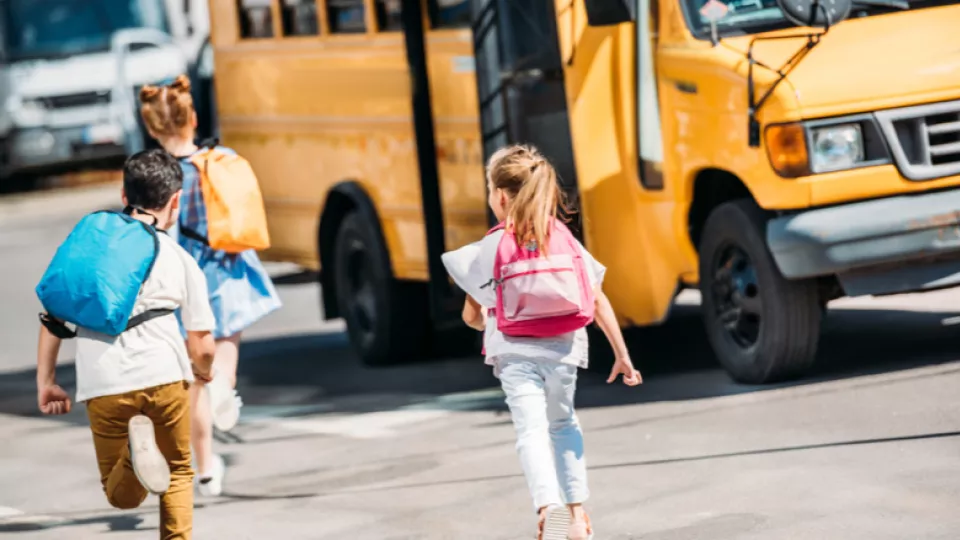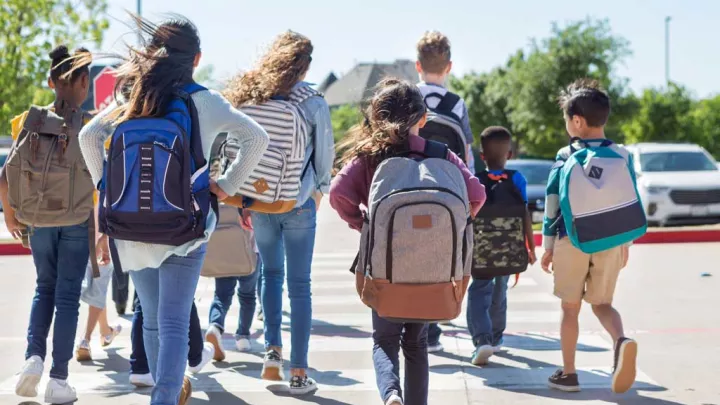
School Bus Safety and Etiquette
Do you remember riding the school bus as a kid? Most children enjoy riding the bus to school because it meant being with their friends, having extra time to finish their homework and a sense of independence. Back then, "seat hopping” allowed kids to get closer to friends while the bus was moving and keeping your seat belt super loose so that I could easily turn around to talk to the person in the seat behind you were old bus-riding tactics. Clearly, none of these bus behaviors were safe.
If you haven’t done so already, make sure to talk to your child about safety and etiquette for riding on the school bus. Even if your child doesn’t ride the bus to school each day, odds are that they will ride the bus at some point, whether it’s on a school trip or going home with a friend.
Safety rules to follow before and after riding the bus
- Stay on the sidewalk. Teach your child to always walk to the bus on the sidewalk and never to wait for the bus in the street.
- Be on time. Make sure your children have enough time to get to the bus stop without rushing. Kids who are in a rush to get to the bus stop might dart across the street when it is unsafe or chase after the bus to try to catch up with it. Missing the bus may be a bummer, but it’s not worth potentially getting hurt. Make sure your children know that you would never want them to do anything unsafe and that if they miss the bus you will figure something out.
- Street crossing. Hopefully, the bus drops your children off on the correct side of the street. In the event that this is not possible, do your children know how to safely navigate across? Far too many motorists do not stop behind a school bus when the stop sign is out (this is against the law by the way). Teach kids never to assume that the cars will stop, and to only cross when it is safe to do so. Make sure they look both ways!
- Practice crossing! Practice “looking both ways” when crossing. Use this as a learning opportunity to ask, "tell me when it is safe to cross the street".
Safety rules to follow while on the bus
- Always wear a seatbelt. Talk to your children about the importance of wearing their seatbelt on the school bus. Make sure they know to tighten their seat belt enough to keep them secure. We recommend explaining that the rules that apply to the back seat in mom or dad’s car are also applicable to the school bus.
- Staying seated. Getting up and walking around while the bus is moving can be very dangerous. Your child could trip and fall or even go flying if the bus stops too quickly or goes over a big bump. Teach your child to refrain from “seat hopping” while the bus is moving and to wait to make an exit until the bus has made a complete stop.
- Tell children that they should never try to pick up anything that falls under the bus. If something gets dropped, instruct them to tell the driver that they have dropped something and need help.
- Tell your children never to stick their hands, arms, legs or head out of the bus windows.
- Exits. I remember my school holding drills for exiting the bus safely in the case of an emergency. Hopefully, your children’s school does this as well. Ask kids if they know where and how to exit the bus in the case of an emergency.
- Exiting the bus. Instruct your children never to cross behind the bus. They should walk far enough in front of the bus when crossing so that the driver can see them. Make sure that your children make eye contact with the driver and wait for directions before crossing in front of the bus.
- Pay attention. Make sure that your children know where to get off the bus. If the stop is not immediately near your home, it may be helpful to familiarize kids with the area so they feel comfortable knowing where to get off. We also recommend asking children if they know what to do if they miss their stop.
- Getting off at the right place. Teach your child to never get off the bus at a friend’s stop without permission, and arrange this with the bus driver first. Inquire with the school on their policy for going home with friends on the bus after school.
Etiquette
- Make sure your children know that their behavior on the bus can impact their bus driver’s ability to focus and drive safely. Encourage kids to refrain from yelling, talking loudly or getting out of their seats while the bus is moving.
- Talk to your kids about the importance of respecting and listening to directions from the bus driver or bus aid.
- Teach children to clean up their trash. Leaving garbage behind is disrespectful to the bus driver and a potential safety hazard for someone to slip or trip on.
- Be courteous. Teach children to greet their bus driver with a polite “hello” or “good morning,” or “goodbye” when getting on or off the bus. Encourage them to learn the bus driver’s name and to say “thank you.”


